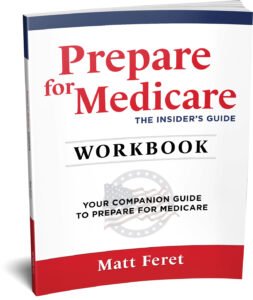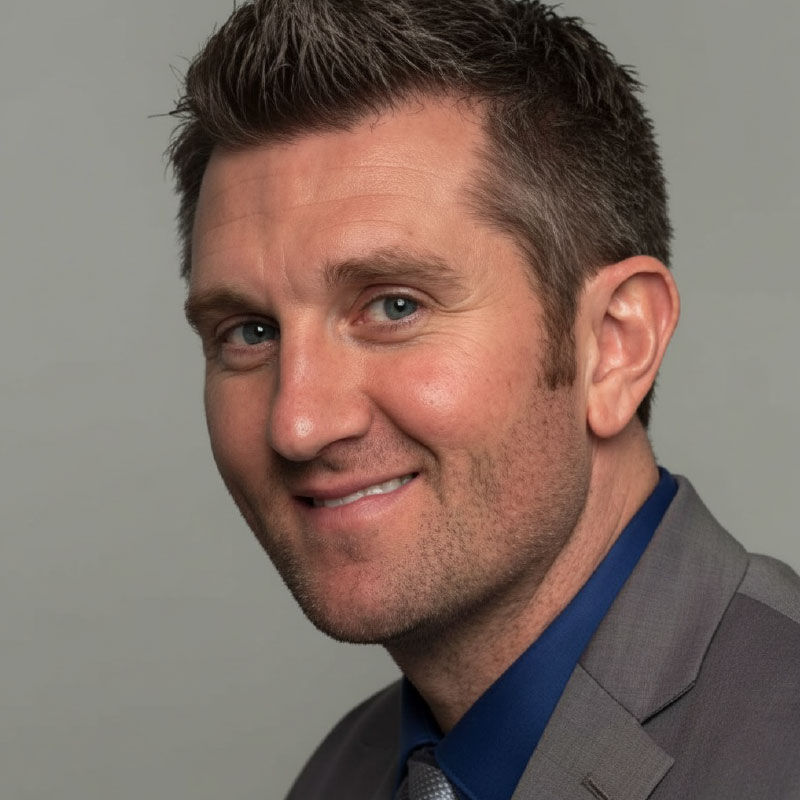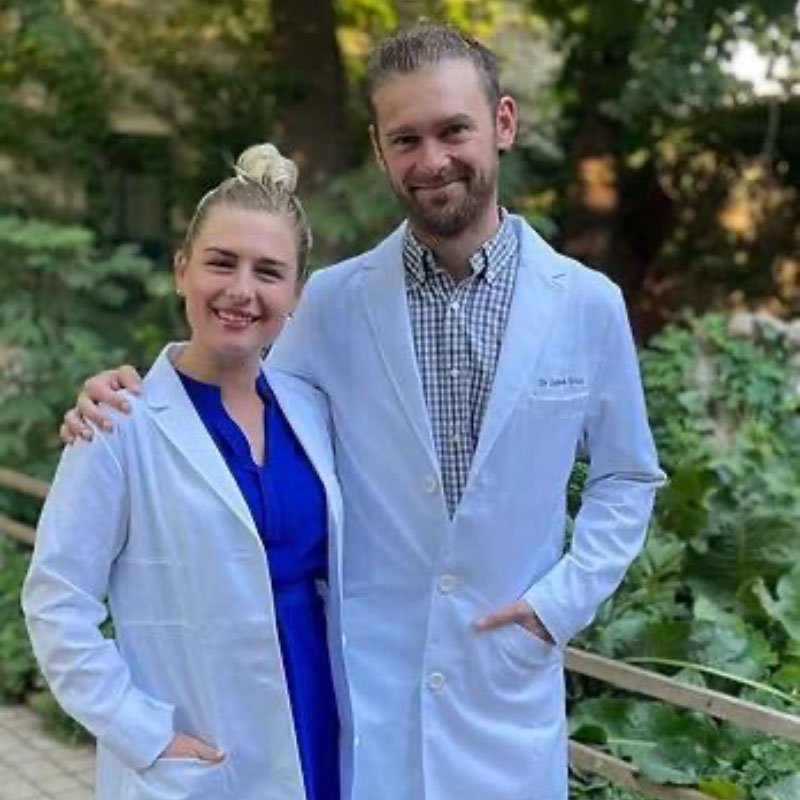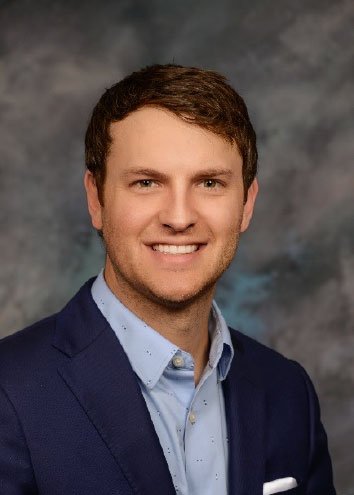#028
Share This:

Physical Therapy Tips for Older Adults and Caregivers with Dr. Beth Williamson, DPT
“I think a lot of people avoid physical therapy or avoid going to the doctor because they're afraid that that's exactly what the doctor or the physical therapist is going to say to them; "Nope, you can't do that anymore. We're going to take that away from you."
“Just know that a good doctor and a good physical therapist will help you be as functional as you want to be in a safe way. Now, there are certainly things that might be taken away because they're contraindicated or they're just in general bad for your health. But for the most part, a good therapist and a good doctor will help you find a way around that or find new activities that you'll be happy with.”
- Dr. Beth Williamson, DPT
Dr. Beth Williamson is a physical therapist with a long history of getting people healthy. On this episode of The Matt Feret Show, you’ll get an insider’s guide to choosing a physical therapist, when to make a change, striking the right balance between doctor, surgeon and your physical therapist, and a caregiver’s most important role in physical therapy. We take a look at physical therapy outcomes and age, and touch on how limitations in insurance coverage for physical therapy can throw a wrench in your recovery journey.
Enjoy!
Listen to the episode on Apple Podcasts, Spotify, Deezer, Podcast Addict, Stitcher, Google Podcasts, Amazon Music, Alexa Flash Briefing, iHeart, Acast or on your favorite podcast platform. You can watch the interview on YouTube here.
Brought to you by Prepare for Medicare – The Insider’s Guide book series. Sign up for the Prepare for Medicare Newsletter, an exclusive subscription-only newsletter that delivers the inside scoop to help you stay up-to-date with your Medicare insurance coverage, highlight Medicare news you can use, and reminders for important dates throughout the year. When you sign up, you’ll immediately gain access to seven FREE Medicare checklists.
Quotes:
“My biggest advice to caregivers is don't drop and leave. I'm not kidding. I see a lot of family members or just hired caregivers that are like, "Okay, here she is. Here he is." And then they walk out of the appointment. And it's like, "Wait a minute." Even when they're dropping off patients that are of sound mind and can remember things, I still think it's a good idea... You're caregiving for a reason. The patient can't drive, the patient can't remember, the patient can't physically get in and out of the house without you. There's some reason that you're there and they're not there by themselves. So, stay there and sit with the physical therapist and sit with the doctor and hear what they're saying so you are the second set of ears to help them navigate whatever they're going through.”
- Dr. Beth Williamson, DPT
“I think that if your doctor has a specific therapist that they recommend, I would listen to them. I've built my practice on getting to know a lot of my physicians and I have three or four close physicians that send directly to me. So if you know that about the therapist, that's a good sign. If the doctor writes a specialty or you know you have had it in the past such as dry needling, active release technique, or if they have lymphedema specialty, you obviously want to look for those certifications.”
“I think it's also important to know the dynamic of how the clinic runs and what kind of care you want to receive. So if you're an athlete and you need a fast-paced clinic and you're okay with having multiple people in the same room at the same time and you're in that environment and that works for you, that's good. If you're somebody who's a little bit more private and you want to make sure they have a private treatment room and that they're seeing people maybe one-on-one, or they have a little bit of overlapping schedule and that's okay with you. So, I do think it's a good idea to look at the clinic and you can always just pop in and ask them.”
- Dr. Beth Williamson, DPT
#028
Selected Link from the Episode:
Full Show Transcript:
00:00:00 / 00:36:05
Matt Feret (00:01):
Hello everyone. This is Matt Feret, author of the Prepare for Medicare book series, and welcome to another episode of The Matt Feret Show, where I interview insiders and experts to help light a path to a successful retirement.
(00:15):
Come say hello at themattferetshow.com for show links, notes, websites referenced, quotable quotes, and the complete show transcript. You can also check out prepareformedicare.com and my new site prepareforsocialsecurity.com. Both support the books Prepare for Medicare: The Insider's Guide to Buying Medicare Insurance and Prepare for Social Security: The Insider's Guide to Maximizing Your Retirement Benefits. Each website features free Medicare and Social Security checklists you can use when you sign up for my monthly newsletter, which you can also do on the shows' homepage themattferetshow.com.
(00:51):
What does physical therapy do? If you've ever had an injury or surgery, the few hours you spend with your doctors usually pales in comparison to the time one-on-one with a physical therapist. Dr. Beth Williamson is a physical therapist with a long history of getting people healthy. On this episode of The Matt Feret Show, you'll get an insider's guide to choosing a physical therapist, when to make a change, striking the right balance between doctor, surgeon and your physical therapist, and a caregiver's most important role in physical therapy.
(01:24):
We take a look at physical therapy outcomes and age and touch on how limitations in insurance coverage for physical therapy can throw a wrench in your recovery journey. Enjoy.
Beth, welcome to the show.
Dr. Beth Williamson (01:36):
Thank you, Matt. Thanks for having me.
Matt Feret (01:39):
So, tell everybody what you do, how long you've been doing it, and how you help people?
Dr. Beth Williamson (01:44):
So, I am a physical therapist with my doctorate in physical therapy from Midwestern University, and I help people rehabilitate from surgery or injuries.
Matt Feret (01:55):
That's a very helpful occupation. So, talk to me a little bit about your journey, how you got into this, what drives you every day, and yeah, a little bit about that.
Dr. Beth Williamson (02:05):
So I started this journey. I was one of the fortunate ones who knew what I wanted to do early on. I was injured in a track injury in junior high and a soccer injury in high school, and both of those brought me to physical therapy. And I was just observant of the surroundings. I have older siblings who went to college and were pursuing business degrees and they were on the computer a lot, and I knew I didn't really want to do that, even though I do document a lot. So when I was there, receiving the therapy, it just seemed like a fun environment. Everybody was talking and it was a lot of camaraderie, and people who didn't even know each other would come in and then they would learn about the other's injury and people would share stories and it was fun, and they were helping people.
(02:56):
So I thought, "I think I could do that for a living." And on my second injury when I was in high school, I just decided that's what I was going to pursue. And then I started looking into colleges that had... At that time, it was becoming a master's degree. So I started looking into colleges that had a pre-physical therapy program. I had my bachelor in kinesiology. And then by the time I went to Indiana University, it became a doctorate. So I knew I had to go on and do three more years of school after my undergrad. And then I went to Midwestern University and got my Doctor of Physical Therapy.
Matt Feret (03:31):
That's awesome. Thank you. So tell me about what you like most about what you do.
Dr. Beth Williamson (03:39):
I like that I have to think on my feet. I like that every time somebody comes in, there might be something new, they might have a new injury, there might be something that I thought was going one way and that has to go the other. That keeps it fresh, keeps me on my toes. And I like learning everyone's individual story. I think it's very personal, physical therapy. You get to know the patient and you get to know their story, and it's not just about what happened to them, but it's about what happened to them at a certain time in their life and how they handled it and what motivates and drives them to make themselves better.
Matt Feret (04:14):
Yeah. And in my experiences with physical therapy over the years, you have either some sort of repetitive injury that you've done doing sports or you've missed a step and broken ankle. And sometimes, it's post-surgery. But I always felt like you go in for your doctor and you get a surgery or diagnosis, but the PT process is, at times, way more involved, a way more personal, and I feel like the physical therapist almost get to know you better than the people actually doing the repair or the surgery or the diagnosis. Do you find a lot that to be true? A. And then B, do those things sometimes highlight other underlying issues or older things that make you tweak your, I guess, model of care or your care practicum?
Dr. Beth Williamson (05:03):
Yeah, absolutely, that's true. I think the average time is three minutes spent with a doctor. And then a physical therapist, you're seeing depending on your injury, one to four times a week, for 30 to 60 minutes. So it's a significant difference. I think it's important to understand how the doctor runs their operations because I think, a lot of times, because they're in that clinic for such a short period of time, they don't really get all the information they need from the doctor or from their staff.
(05:40):
And so when you know the doctors and how they operate and you know the surgical procedures and you know what's happening, you can give that patient more information at the physical therapy visit. So you're not always going, "Well, I don't know, I don't know." And then they don't know from the doctor and it can be very confusing. So that's one portion of the job that is pretty important.
Matt Feret (06:00):
And when someone looks for a physical therapist or a physical therapy firm, I mean... Again, most of all of our combined experiences, "Well, you need X, so here's someone or a group of people you can go to in a piece of paper and then maybe you get on the website of your insurance carrier and you start looking and they all start to blend together with different acronyms behind the names and you can sort by group and zip code." When it gets down to it, should people, who seek out physical therapy, what should they do? Should they go and interview them? Should they go a couple of times and see if it's a right fit? Should you change physical therapy? What should people in your opinion look for in a physical therapist?
Dr. Beth Williamson (06:50):
That's a great question. Lots of factors in there. I think word of mouth is powerful. I think that if your doctor has a specific therapist that they recommend, I would listen to them. I've built my practice on getting to know a lot of my physicians and I have three or four close physicians that send directly to me. So if you know that about the therapist, that's a good sign. If the doctor writes a specialty or you know you have had it in the past such as dry needling, active release technique, or if they have lymphedema specialty, you obviously want to look for those certifications.
(07:38):
I think it's also important to know the dynamic of how the clinic runs and what kind of care you want to receive. So if you're an athlete and you need a fast-paced clinic and you're okay with having multiple people in the same room at the same time and you're in that environment and that works for you, that's good. If you're somebody who's a little bit more private and you want to make sure they have a private treatment room and that they're seeing people maybe one-on-one or they have a little bit of overlapping schedule and that's okay with you. So I do think it's a good idea to look at the clinic and you can always just pop in and ask them.
(08:16):
One big thing that I don't want to dismiss is convenience. So you want to make sure it's close to home. You're not going to have a high success rate if you're driving. You're going to have a higher cancellation rate if people are farther away. And compliance to the program is going to set you up for the most success. So if you can find that beautiful combination of somewhere close that has a specialty you need and the dynamic of the clinic works for you, that's the three big parts there. You don't always have to shy away. I mean, I know obviously everybody wants somebody with experience. That is important. But there are therapists that are one, two years out that are better than some of them that are nine, 10 years out. So again, it just has to match your personality and how they treat.
Matt Feret (09:05):
How long would you give it? So let's say someone gets a referral on PT and someone goes one, two, three, five times. On what measuring stick, if I'm the healthcare consumer, should I be? What on that stick should I be worried about besides convenience? Is it that, "Am I getting better? Do I feel I'm being communicated with? Is it private? Is it group?" Are there other considerations of, should we try out physical therapists or should we stick with one and try it for a certain amount of time? How do I handle that when I think about all the different PT places out there and trying to fit the best match for me?
Dr. Beth Williamson (09:42):
Well, I'm not a huge fan of people therapist-hopping or doctor-hopping for that matter. Obviously second, third opinions can be very, very good for people. However, I always think with the scientific method. If you put too many variables in, how do you know what's helping? So you need to try something first in completion before if it was successful or not. So a good therapist will also know, if you're plateauing, if you're not making progress, they shouldn't be doing the same thing over and over. So that's one thing you should look for is, if you're going to therapy and it's been a couple of weeks and nothing's getting any better and they're doing the same exact exercises and the same exact thing, that's a little bit of a yellow flag.
(10:29):
Now, there are protocols that therapists follow after surgery where sometimes that first healing stage is a little bit boring because you are doing some repetitive stuff. But after that, once you've progressed out of that healing phase, you should see your therapist changing exercises, increasing the resistance, modifying the program and starting to wean you and saying, "Okay, well maybe we need to go one time a week, maybe we need to go every other week." So the timeframe is different for every diagnosis. But I would say look for the change, look for the progress in that first two to six weeks. And if that's not there, one, the therapist should be referring you back because maybe that you need new diagnostic tests or maybe something else is wrong, maybe you need pain management as well as physical therapy to help you get through it.
Matt Feret (11:28):
So if we think about older adults, and that can be a wide range, but let's go look 40, 50 plus, what are some of the more common differences you see in older patients or challenges that you see that a good physical therapist must take into consideration?
Dr. Beth Williamson (11:46):
I think the biggest thing for people in their forties and fifties is the activity modification. That would probably be the biggest challenge, I think, that that demographic finds. Like you said, they don't have the same muscle mass, they don't have the same type of balance, flexibility. Sometimes you start to see more wear and tear on the joints and the spine, and they still want to play basketball for two hours, five days a week, and then run a marathon and play pickleball and then climb Mount Everest. They have all these goals, these physical goals.
(12:27):
And some of them didn't even necessarily do that in their twenties and thirties. They're kind of going, "Oh gosh, I have life goals. I need to start being more physically active," except we've forgotten our body doesn't look like it did or behave like it did when they were 20. So I think physical therapy really, really helps those people identify what's appropriate and set realistic goals without taking everything away and helping people realize, "Okay, well we can do this. It might look differently."
(12:57):
You might be running a half-marathon at a 10 minute pace versus running a marathon at an eight minute pace. Or you might have to cut back on basketball and do it three times a week instead of five times a week. Or even lower level than that, just getting somebody who's starting an exercise program might want to go do Orangetheory for five days a week and saying, "Hold up, let's do that twice a week and start walking." So it depends on the patient. But just learning how to modify activity to fit their new body type, I think, would be the biggest act.
Matt Feret (13:34):
And in terms of recovery time or treatment time when someone has a surgery in their forties and fifties, along those same lines, is the recovery time longer? Is the repair as complete or the flexibility in motion as possible as it was in their twenties or thirties still in your forties and fifties?
Dr. Beth Williamson (13:54):
It can be. It oftentimes is less. I mean, if you look at statistics, it's definitely a longer recovery time and maybe not as high of a success rate. And that's most likely due to what their range of motion and strength was immediately before surgery. So a lot of times, young people have full range of motion, full flexibility, and they're strong, and then they have the traumatic injury, a sports injury, but they recover quickly because they have healing properties that are a lot quicker than our 40 and 50 year old body.
(14:28):
Let's take a rotator cuff repair. A young person in their twenties, a volleyball player, might recover quickly because they had full functional range of motion. They had five out of five on their strength test and they had no other comorbidities. And then you fast forward and you take someone in their fifties. Now maybe they've got heart disease, maybe they've got degenerative disk disease in their neck and they've got 30 years of working a labor intensive job, they're going to recover a lot differently.
Matt Feret (15:09):
You mentioned, back in there, the word balance. I've read a lot and there's a lot out there around balance. And over 65, the percentages of falls that lead to many, many bad things really gets impactful over age 65 and obviously in their seventies and eighties. So from a physical therapy standpoint and a balance standpoint, what are some of the considerations that people listening now can do to improve those things? Is it part of physical therapy? Is it at home? Is it just stay active and go play pickleball and make sure to do yoga? Is there a prescription, so to speak, on the balance piece, and where does PT factor into that?
Dr. Beth Williamson (15:51):
Yeah. Balance is a huge thing that I see in a lot of my 65 plus patients. It's a huge part of physical therapy. I mean, to be honest, I work on balance even in my young runners. So it's something that if you start working on at an earlier age, it will help you in the long run. I think the important take home issue is if you start to see just in your everyday life a decline in balance, like maybe you're tripping a little bit more often than you would or you're stumbling or you notice that people are commenting on your gate a little bit more, get in right away. Because the longer you wait, you can, God forbid, have an actual fall with a fracture, or you could just have a steady decline that you're not even noticing, and all of a sudden, one day, you're like, "Oh wow, I can't do this any longer."
(16:53):
The issue with balance is, sometimes it's a hard type of exercise to work on at home, one, for safety issues, but two, it's also pretty boring. It's a boring type of exercise. There's not a lot of people that go to the gym and they're like, "I'm going to work on my balance."
Matt Feret (17:10):
No, right. They're going for abs and-
Dr. Beth Williamson (17:12):
"I'm going to hit the balance exercises now."
Matt Feret (17:15):
Yeah, abs and biceps. Let's start there and end there. We don't really think about balance much.
Dr. Beth Williamson (17:20):
Right. So I would say, if you are somebody that goes to the gym or you are physically active, start incorporating it. So when I go to the gym and I'm doing shoulder exercises, I stand on one leg and do it. You always want to incorporate the core. You can stand on the BOSU ball when you're doing your squats instead of doing them on the regular ground. There's all different types of variety of exercises. And even if you notice a balance deficit, it doesn't mean that you need to spend your insurance money or your Medicare money to have six weeks of physical therapy unless you have a significant functional deficit. Maybe you talk to your primary care doctor and you say, "I'm noticing these balance issues." Just maybe one or two visits so they can show me things that I can incorporate into my workout. Yeah.
Matt Feret (18:13):
Yeah. Super balance helpers out there?
Dr. Beth Williamson (18:17):
Well, yoga and Pilates are both very good. I really am a big fan of Tai Chi, especially in 65 and older. I think it's a great thing for 40 to 60 as well. It's meditative and it's also incredibly good for what we call functional balance. So you can stand on one leg all you want. How functional is that, right? If you're not doing anything when you're standing on that single leg, if you're not reaching or moving, it doesn't become functional until you start incorporating multi directions and you're doing multiple things. So Tai chi incorporates that you're reaching, you're bending forward, you're bending backwards, you're transitioning from one foot to the next, you're using different types of surfaces. So I think Tai Chi is a great thing for balance.
Matt Feret (19:15):
And those are the physical components of it too. Is there also something in the brain in terms of balance or in the ears or anything like that that maybe makes a balance work or correcting imbalance a little bit more difficult from a PT standpoint?
Dr. Beth Williamson (19:31):
Well, sure. So your ability to stay in one place and stand and be a balanced individual is based off of your vision, your vestibular system, which is your inner ear, the fluid inside your ear, and your proprioception, which is your ability to sense where you are, your tactile sensation to the floor and sending that signal up to your brain to know where you are. And all three of those things go downhill as we age. So they play into why people have decreased balance when they age.
Matt Feret (20:05):
And so if I'm at home right now and I'm thinking, "Gosh, how do I not only key off on balance issues, but how do I take care of it myself?" Does the physical exercise or the yoga or the Tai Chi that you talked about, does that help with all three of those areas or is it really just more the physical piece and the other areas are part of it or not?
Dr. Beth Williamson (20:27):
I would say that the Tai Chi and the yoga and everything that it's more of the physical aspect of it. Obviously you need to get your eyes checked regularly to make sure you've got the visual component of it. And the vestibular aspect is, not many people really recognize that unless they're having signs of vertigo or dizziness or anything like that. And that would bring them to the doctor if they had issues with that.
Matt Feret (20:53):
Let's go to the 60 plus or 65 plus side of it. What are the most common or more common injuries and/or conditions that you see in that age group?
Dr. Beth Williamson (21:06):
Low back pain, low back pain and low back pain.
Matt Feret (21:11):
Really?
Dr. Beth Williamson (21:12):
Yeah, lot of low back pain. Neck pain from postural issues. And deconditioning would be another one. So just people who are inactive and have been through maybe... I have lots of patients that have cancer and how that's affected their activities of daily living. They're less active. Maybe they're going through chemotherapy. They're not participating in a lot of activities. So they come to us to strengthen. Yeah, those are probably the big three right there. Low back pain, neck pain and deconditioning.
Matt Feret (21:57):
And the first two were spine related.
Dr. Beth Williamson (22:00):
Yes. Yeah. That's a big diagnosis in 65 and plus.
Matt Feret (22:06):
I know you touched on it briefly in that previous answer, but why? Is it sitting? Is it hard work? Are they bricklayers? Are they office people? Is the spine the component of not working out or not doing load bearing exercises enough? Why is it the spine in 65 plus?
Dr. Beth Williamson (22:28):
Well, I think we're living longer. That's an answer. So we're putting a lot more years on our body. You can have people though. What's interesting about the low back is you can have somebody who is sedentary and sitting a lot and overweight and they have back pain, and then you can have someone who's seemingly more fit and healthy, they have a healthy weight, they haven't had a laborious job and they just have bad genes. You know what I mean? They do. So it is a big spectrum. I just think that the genetic factor, the physical activity, the lifestyle, those are all components that go into it. And so the reason it's happening at 65 plus is just those amount of years that those three factors have gone into that.
Matt Feret (23:24):
Are there pieces in there that have to do with inflammation, not just like a structural from a spine standpoint, but is there an inflammation piece there as well as the body's age? Or is it almost a chicken and egg? It's, there's something wrong with the spine, therefore it causes inflammation. Is it any time the other way around? Does inflammation or chronic inflammation ever play a role here?
Dr. Beth Williamson (23:48):
Well, sure. I mean, when you're talking about the spine... That's kind of a loaded question because it is sort of a chicken or the egg. Something I like to bring up with the spine is, you can look at your MRI image and you can have... Take 10 people out on the street and do an MRI, and maybe six of them have herniated discs or bulging discs, and two of them are symptomatic. So a lot of people try to identify via imaging, "This is what's wrong with my spine. I have a bulging disc and this is what's wrong. We need to fix that."
(24:33):
And it might not necessarily, the source of your pain might not necessarily be coming from that. Does that play into it? Sure. But maybe it's because your body is compensating for that bulging disc and actually just taking care of the muscles around it, strengthening your core, reducing some of the restrictions around your paraspinal muscles, which are the spinal muscles in the back, might help the problem. And this is why physical therapy is good, because you don't have to go after that bulging disc. You can live with the bulging disc as long as you know how to adjust and compensate for it. Does that make sense?
Matt Feret (25:16):
It does. Any other things over, let's say, age 60 or in your sixties and seventies that would be different or that you think people should look out for, be at least attuned to when they talk to their doctors or they're listening to their own body above and beyond what you talked about earlier?
Dr. Beth Williamson (25:30):
Okay. Yeah. I think the biggest take home for people in that age group is to just understand when you are recovering or when you're going to physical therapy that it will take longer. There's no magic wand. So it might not mean that you need double the amount of physical therapy visits, but you might need double the amount of time. So to be patient, for one, and to understand that you will have to potentially modify activities. I think that's the biggest thing that people have a hard time with, is letting go of some things, but still remaining active and holding onto others, making those changes.
(26:16):
And I think a lot of people avoid physical therapy or avoid going to the doctor because they're afraid that that's exactly what the doctor or the physical therapist is going to say to them, "Nope, you can't do that anymore. We're going to take that away from you."
Matt Feret (26:28):
Stop playing basketball. I don't want to stop playing basketball.
Dr. Beth Williamson (26:32):
Yeah. And just know that a good doctor and a good physical therapist will help you be as functional as you want to be in a safe way. Now, there are certainly things that might be taken away because they're contraindicated or they're just in general bad for your health. But for the most part, a good therapist and a good doctor will help you find a way around that or find new activities that you'll be happy with.
Matt Feret (26:59):
And you've talked a whole lot about the interplay between doctor and physical therapist. What's your advice around, let's just say, maybe not elective surgery, but non-emergency surgery. When you've got an ache or a pain or you've got an issue and you've tried physical therapy, or maybe you haven't, and the doctor is saying maybe this is surgery, do you think there's a balance between, and if so, what is it between physical therapy and surgery and that conversation between a doctor or a surgeon and the physical therapist?
Dr. Beth Williamson (27:39):
Right. I would say, first and foremost, you should exhaust all of your conservative options first. So having that conversation with your physician and understanding, "Okay, give me all of the options from here to surgery. I want to know what all of them are." Laying them out first and foremost. So for instance, let's just pull knee arthritis. You can do physical therapy, you can do a weight loss program, you can take oral medication, and there are two types of injections that you can receive. You can receive cortisone injections, and you can receive viscosupplementation injections. So knowing those options and exhausting those before you have surgery.
(28:27):
And I think that the best advice for knowing when it's time to have surgery is how is it affecting your life. If you are saying no to everything, "No, I can't meet you out for dinner. No, I can't go to your house on the weekend. No, I can't go to church. No, I can't go grocery." If the answer's always no and becoming frequent, I think it's time. If you've exhausted all your conservative options and you're not living your life, then it's time for surgery.
Matt Feret (28:58):
So it's not always necessarily a structural question or a surgery question, it's a lifestyle versus surgery versus PT versus other alternatives.
Dr. Beth Williamson (29:05):
Yeah. Yeah. Yeah.
Matt Feret (29:09):
Quick pivot, but an important one. If I'm a caregiver, and that can mean a caregiver of someone in their forties whose spouse or family member or a friend is disabled, all the way up into grandparents who are, as you mentioned living longer and longer, in their eighties and nineties and may have full cognitive function and may not. It's a really, really tough thing, as we all know to be a caregiver. What's your advice, or what perspective can you lend folks that are taking people to appointments and making sure that their doctors are doing everything they think they need and their physical therapists are doing everything that they need? You have any perspective on that?
Dr. Beth Williamson (29:52):
My biggest advice to caregivers is don't drop and leave. I'm not kidding. I see a lot of family members or just hired caregivers that are like, "Okay, here she is. Here he is." And then they walk out of the appointment. And it's like, "Wait a minute." Even when they're dropping off patients that are of sound mind and can remember things, I still think it's a good idea... You're caregiving for a reason. The patient can't drive, the patient can't remember, the patient can't physically get in and out of the house without you. There's some reason that you're there and they're not there by themselves. So stay there and sit with the physical therapist and sit with the doctor and hear what they're saying so you are the second set of ears to help them navigate whatever they're going through.
Matt Feret (30:42):
Well, that's a great point because I would assume there's a lot of at-home exercises that-
Dr. Beth Williamson (30:47):
Yes.
Matt Feret (30:48):
... need to happen outside of a clinical setting in the home. The caregiver should probably understand what those are, right?
Dr. Beth Williamson (30:56):
I think that's probably for physical therapy specifically. You've got a lot of people on Medicare who have limited amount of physical therapy visits. So that home program is going to be very, very, very critical. And if they can't get that done completely independent and they rely on their caregiver, that's important for their caregiver to know. We do a program for Parkinson's patients. It's called the BIG program, LSVT program, and it's a protocol driven program. The exercises are laid out for you, and you do them repetitively, so the patient gets used to them.
(31:32):
And then once they've gotten those down in physical therapy, we're done with those. The expectation is that those are being done at home. Now, most Parkinson's patients have other comorbidities going on. They've got breathing issues, balance issues, memory issues, and so they will need those caregivers to help them perform those exercises. So staying with them, learning the program and helping them at home is, in terms of physical therapy, the biggest issue I see.
Matt Feret (32:02):
Beth, this has been great. Thanks. What questions should I have asked that I didn't?
Dr. Beth Williamson (32:12):
Insurance questions. Do you have any insurance questions?
Matt Feret (32:15):
Oh, gosh. We could probably do an entire-
Dr. Beth Williamson (32:17):
I know.
Matt Feret (32:17):
... five episodes on insurance questions and billing back and forth. But yeah, I mean, you just mentioned the last part of that, that Medicare has some limitations there that probably cut into the level of effectiveness that you as a provider can give. But yeah, go for it.
Dr. Beth Williamson (32:34):
I'd say the biggest thing to know with Medicare is that there is an annual cap on your dollar amount allowed for physical therapy. So just being aware that you know that, and that the physical therapy office that you're working with is aware of that, and knowing that that's going to limit how many total visits you get, and having an understanding that doing the stuff at home is important. There are exceptions. Obviously, people who have longer recovery times or maybe they have multiple surgeries in a year, the physical therapist is able to write letters of medical necessity so you can continue with your physical therapy.
(33:12):
So understanding that that can happen is important, I think. And of course, any other insurance. My biggest advice is just to know your policy, know how many physical therapy visits you get, know what your co-insurance is, because that does play a factor into how your rehab goes. Don't be afraid to have those conversations and ask the therapists and understand it yourself, call the insurance company and understand yourself, because that's just the world we live in. Unfortunately, we have to factor that in.
Matt Feret (33:50):
Is there something that I could do if I'm the patient, I run out of physical therapy visits? You said call your insurance company. Or is that really the coordination between, "Hey, how many more do I need to get better here based upon medical necessity?" Is it a PT office calling the insurance company? Do I have to get on the horn and call? Or is it a combination of all and every?
Dr. Beth Williamson (34:12):
No, it's a combination of the doctor and the physical therapist writing letters of medical necessity and sending their notes in to ask for more visits. The most important thing that a patient can do is understand it before you get to that point. When you start physical therapy or before you start physical therapy, knowing what your benefits are, how many visits you have, so you and your physical therapists can work together to design the program around that.
Matt Feret (34:36):
That's great advice. Beth, thank you very much for your time.
Dr. Beth Williamson (34:40):
You're welcome, Matt. Thank you.
Matt Feret (34:42):
The Matt Feret Show, related content, the publications, and MF Media LLC is in no way associated, endorsed, or authorized by any governmental agency, including the Social Security Administration, the Department of Health and Human Services, or the Centers for Medicare and Medicaid Services. The Matt Feret Show is in no way associated with authorized, approved, endorsed, nor in any way affiliated with any company, trademark names or other marks mentioned or referenced in or on The Matt Feret Show. Any such mention is for purpose of reference only.
(35:20):
Any advice generalized statistics or opinions expressed are strictly those of the host and guests of The Matt Feret Show. Although every effort has been made to ensure the contents of the Matt Feret Show and related content are correct and complete, flaws and regulations change quickly and often. The ideas and opinions expressed on The Matt Feret Show aren't meant to replace the sage advice of healthcare, insurance, financial planning, accounting, or legal professionals. You are responsible for your financial decisions. It is your sole responsibility to independently evaluate the accuracy, correctness, or completeness of the content, services and products of and associated with The Matt Feret Show, MF Media LLC, and any related content or publications.
(36:05):
The thoughts and opinions expressed on The Matt Feret Show are those of the host and the Matt Feret Show guests only and are not the thoughts and opinions of any current or former employer of the host or guests of The Matt Feret Show, nor is The Matt Feret Show made by, on behalf of, or endorsed. or approved by any current or former employer of the host or guests of The Matt Feret Show.
LEGAL CONDITIONS:
Matt Feret/MF Media, LLC owns the copyright all content and transcripts of The Matt Feret Show, and themattferetshow.com with all rights reserved, as well as right of publicity. All rights reserved.
No part of this publication may be reproduced or transmitted in any form or by any means, electronic or mechanical, including photocopying, recording, or by any information storage and retrieval system without written permission of the publisher, except for the inclusion of brief quotations in a review. You are welcome to share the below transcript (up to 500 words) in media articles, on your personal website, in a non-commercial article or blog post, and/or on a personal social media account for non-commercial purposes, if you include attribution to “The Matt Feret Show” and link back to the themattferetshow.com website.
WHAT IS NOT ALLOWED: No one may copy any portion of the content or use Matt Feret’s name, image or likeness for any commercial purpose or use, including without limitation inclusion in any books, e-books, book summaries or synopses, or on a commercial website or social media site (e.g., Facebook, Twitter, Instagram, etc.) that offers or promotes your or another’s products or services.
DISCLAIMER: This publication is in no way sponsored, associated, authorized, approved, endorsed nor, in any way affiliated with any government agency, company, trademarked names, or other marks. Any such mention is for purpose of reference only. Any advice, generalized statistics, or opinions expressed are strictly those of the host and the guest. This publication, The Matt Feret Show nor themattferetshow.com website is meant to replace the sage advice of healthcare, insurance, financial planning, accounting, or legal professionals. You are responsible for your financial decisions. It is your sole responsibility to independently evaluate the accuracy, correctness or completeness of the content, services, and products of, and associated with this publication. The thoughts and opinions expressed in this publication are those of the host and guest(s) only and are not the thoughts and opinions of any current or former employer of the host and guest(s) nor is this publication made by, on behalf of, or endorsed or approved by any current or former employer of the host and guest(s).















